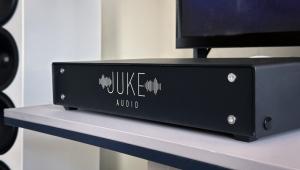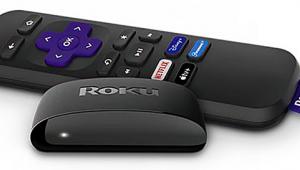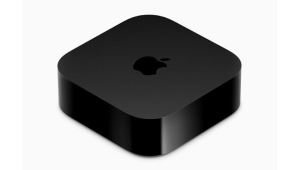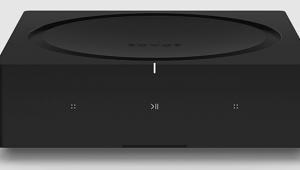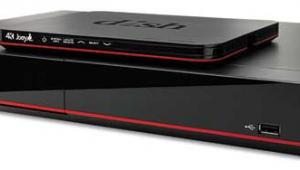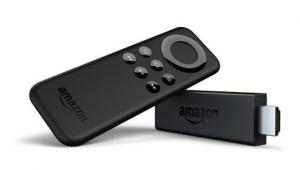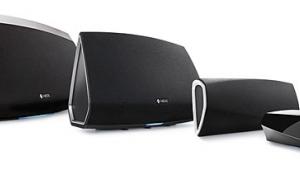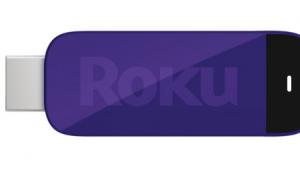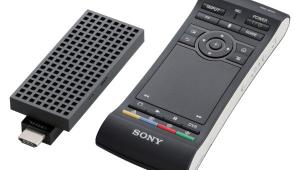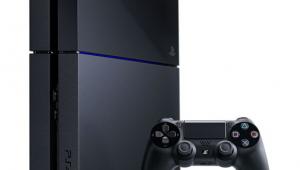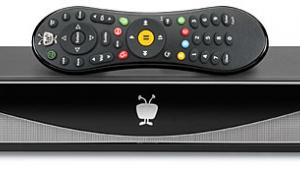I use Tidal Hifi subscription and chromecast audio connected to a Rotel integrated amp (without internal dac) and Paradign Studio 20's. I would like know of a $150 or less DAC to add that would improve over the chromecast DAC. Clearly by adding a $35 streamer, I'm trying to keep my costs down.
Going Wireless with Google's Chromecast Audio

AT A GLANCE
Plus
Cheap!
Easy to set up
Optical digital and analog audio outputs
Multiroom capability
Minus
No Support for Apple Music
No Cast-compatible iOS app for Amazon Music
Built-in DAC is nothing special
THE VERDICT
Google’s Chromecast Audio streaming device makes it easy to set up a hi-res-compatible wireless music system with existing audio gear at a price that can’t be beat.
Chromecast is a family of media streaming devices from Google that tops out with the new 4K and HDR video-compatible Chromecast Ultra ($69). For those interested in audio-only streaming, the line includes the $35 Chromecast Audio, which as of mid-February was being promoted widely at $30. With optical digital and analog audio outputs plus support for up to 802.11ac Wi-Fi, the Chromecast Audio represents perhaps the least expensive way to add wireless streaming to legacy speakers and audio systems. Even so, it may not be the best option for everyone. Let’s take a look at what Chromecast Audio can and can’t do.
A puck-like device about the size of an Oreo, Google’s streamer sports two connections: a micro-USB port for power and a single 3.5mm jack for audio output that functions for analog or digital signals. Google gives you a USB power supply; another option is to connect to a powered USB port on your receiver. A 6-inch cable with 3.5mm jacks is included for analog audio connections. For a digital hookup, you’ll need to supply your own cable with a mini-Toslink connection.
Setup of the Chromecast Audio is carried out using the Google Home app (Android/iOS), which can also be used to create speaker groups for multiroom playback. Once that’s done you stream audio directly from apps by tapping the Cast button on the app’s interface. Which apps are Cast-compatible? For music fans, the big ones are Spotify, Tidal, Pandora, Deezer, Slacker, YouTube, and, of course, Google Play music. There are plenty more, all of them listed here . Two notable omissions are Amazon Music and Apple Music, the default music player for iOS devices. Another potential showstopper is that Spotify requires a Spotify Premium subscription—yep, the commercial-free version that you have to pay actual money for.
The Android Advantage
While Chromecast supports both Android and iOS, there are definite advantages for Android users. The main one is that, while iOS apps need to be Cast-enabled, you can stream audio from any app in Android. Chromecast Audio also supports direct streaming from web apps within the Chrome browser, which works on PC, Macs, and Chromebooks. All you have to do is download the Chromecast extension from Google, then click the Cast icon on the browser window and you will be presented with a menu of compatible devices to stream to.
Chrome vs. Cast
 When creating speaker groups for multiroom audio within the Google Home app, you need to distinguish between Chromecast devices and Google Cast devices. Basically, a Google Cast device is a speaker, soundbar, TV, or other product from a third-party manufacturer that has licensed the streaming technology from Google. While Google Cast devices can be grouped together for multiroom playback, they can’t be combined in a group with Chromecast devices. For example, I was unable to create a speaker group consisting of the Cast-enabled LG soundbar in my bedroom and the Chromecast Audio in my living room system. This seems like an odd limitation—one I hope Google will rectify in a future software version.
When creating speaker groups for multiroom audio within the Google Home app, you need to distinguish between Chromecast devices and Google Cast devices. Basically, a Google Cast device is a speaker, soundbar, TV, or other product from a third-party manufacturer that has licensed the streaming technology from Google. While Google Cast devices can be grouped together for multiroom playback, they can’t be combined in a group with Chromecast devices. For example, I was unable to create a speaker group consisting of the Cast-enabled LG soundbar in my bedroom and the Chromecast Audio in my living room system. This seems like an odd limitation—one I hope Google will rectify in a future software version.
A recent update to Chromecast devices allows them to work with Google Home voice-activated speakers ($129). While I didn’t have one on-hand to try out, this should let you control playback with voice commands. You’d say, for instance, “OK Google, cast Led Zeppelin’s ‘Whole Lotta Love’ onto Chromecast Kitchen.” Jimmy Page’s driving guitar would then flow forth from the audio system in your kitchen, and you would end up chopping vegetables with a greater sense of urgency.
How Does It Sound?
Setup of the Chromecast Audio in my system using the Google Home iOS app was a snap: I simply had to link it to my network by entering my router’s password, and then name the device. To test sound quality, I streamed uncompressed CD-quality tracks from Tidal (a Cast-compatible app) and alternated between using an optical digital connection to my integrated amp and an analog hookup so I could evaluate performance of the Chromecast Audio’s built-in DAC, which decodes MP3 files, along with WAV and FLAC ones with up to 24-bit-/96-kHz resolution.
Listening to the track “Lazy Afternoon” by Grant Green, the jazz guitarist’s leads sounded mellower and more full with my Rotel integrated amp’s internal DAC handling the decoding. The Chromecast’s sound, in comparison, was edgier, and its overall presentation flatter. The difference wasn’t subtle: I would strongly recommend using an optical connection to an external DAC if you want to get best performance from the Chromecast Audio, especially when connecting it to a high-quality sound system.
Cast Away
Is Chromecast Audio worth $35 (or less with discounting)? For me, the answer was a firm yes: I was seeking an affordable adapter to stream uncompressed audio from Tidal to an integrated amp. Before that, I had been forced to use Bluetooth, a comparatively low-quality option, to stream audio from my phone. And once Chromecast Audio was up and running, I found myself also regularly using other Cast-enabled apps like TuneIn Internet Radio.
From a hi-fi standpoint, the caveat here is that the Chromecast Audio’s built-in DAC is nothing special‐you’ll fare much better using its optical connection to an outboard DAC, such as the one built into your receiver or integrated amp. And from a usability standpoint, Chromecast Audio’s lack of Apple Music compatibility makes it a tough sell for iOS device owners. Having no Cast-compatible Amazon Music app could also be a problem, though that limitation doesn’t apply to Android users. With all said, the lure of an inexpensive device that lets you quickly and easily set up a hi-res audio compatible wireless multiroom music system is hard to resist. It’s the latest way I’ve let Google into my world.
- Log in or register to post comments


It would be nice if Audioquest provided an optical-in version of their Dragonfly DACs. I think they had something called the Beetle in development which was never released. In general, I am a fan of these reasonably priced add-on devices to add audio/video streaming (chromecast, roku, apple tv, amazon fire, etc..). The 'smart apps' in TVs and AV receivers are never as good or kept up to date anyway. All that logic should just be removed from TVs and AVRs. Just let me buy these inexpensive dongles/boxes to update my TV, AVR or conventional (non-digital) integrated amp. A killer $99 DAC to update optical in/out would be great.

The Audioengine D1 at $170 seems to be pretty highly regarded...I don't have personal experience with it, but judging from others posts and the specs, it seems pretty good for the money.
If you can stretch your budget, the Parasound ZDAC is excellent...I have the older model (new one adds variable line level out and balanced and well as unbalanced outputs). I have been AMAZED at the sound quality from this piece...even though it only supports 24-bit/96Khz max...it still sounds MUCH better than some less expensive models I have auditioned that are capable of decoding 24/192 or higher. In any case, whatever you choose, you will get a LOT more enjoyment from your system with one in the loop!

has balanced and SE analog outputs, but it's fixed, not variable like the Ver.2 Also the SPDIF inputs will support 24/192 and actually upsamples it to an even higher rate. Only the USB input is limited to 24/96 since the chip is used is USB 1.0 compliant only. That input also gets to be upsampled as well.

I havent looked at the back of mine in a while, I forgot that the 1st version did have balanced output, since I use unbalanced. I wasnt aware that the unit could handle higher bitrates through the SPDIF inputs though.

If the Chromecast Audio could be used as a Roon endpoint (Roon Ready device), then multiple purchases would be a no-brainer for my house. I know that rumours were that possibly in Roon v.1.3 this was to happen, but to my knowledge it did not.

For $35 you get $35 sound.. OK but just barely.. I always wonder why (I know $$) silicon valley stuff sounds so crabby.. The Oppo Sonica DAC is 20 times more expensive, better sounding but alas no MQA.. so we all wait..

It's a source! Don't rely on it's internal DAC...hook it up to whatever DAC you want. For $35 it is the least expensive, EASIEST way to get streaming audio into your system and to create a multiroom system!

Yes, but if you use the digital output then is there really any difference between the digital stream being delivered to your dac from chromecast versus any onther digial stream source.

I am renovating a house now and was completely set on using the Niles Auriel. I have now totally switched gears and may just plug 6 of these into the back of a 12 channel amp.
I have been playing with three of them and its surprising efficient. Sure, Sonos or Niles would be better but this is 1/10th the cost and google is likely to improve more quickly than anything else.
I'm not 100% sold yet, but its an intriguing option considering 99% of my music listening is Spotify. The main drawback is different music in different zones. Easily fixed with a family account and dummy Spotify accounts for various tablets around the house. But then only the tablet that starts the music can control it. Still working on how to address this.

Can anyone recommend an app for playback from a local source? I'd like to use the Chromecast Audio to playback from my linux music server. I have built some rasberry pi streamers but this is even lower cost. Also, in such a scenario is the controller (android tablet) still passing the data or is the stream going directly from server to chromecast?

I'm an old school audiophile (big megabuck speakers, electronic crossovers with amps for each driver, high end preamp and dac, etc.) If I add a digital streaming device to feed my dac, is there a difference between a chromecast, and a pioneer elite d-50 - won't they both be streaming a digital file from my server to my dac , and won't that file be the same whether delivered by the chromecast, pioneer or whatever -


